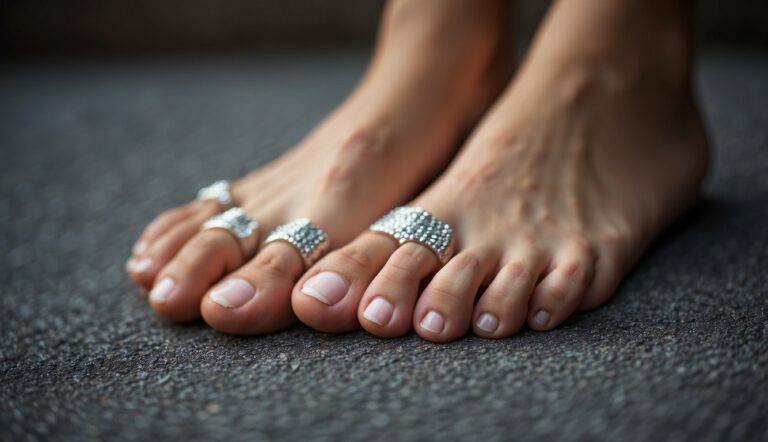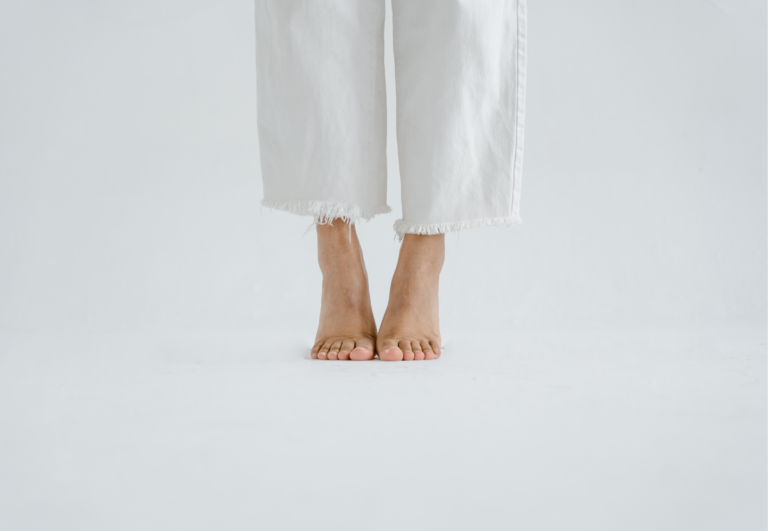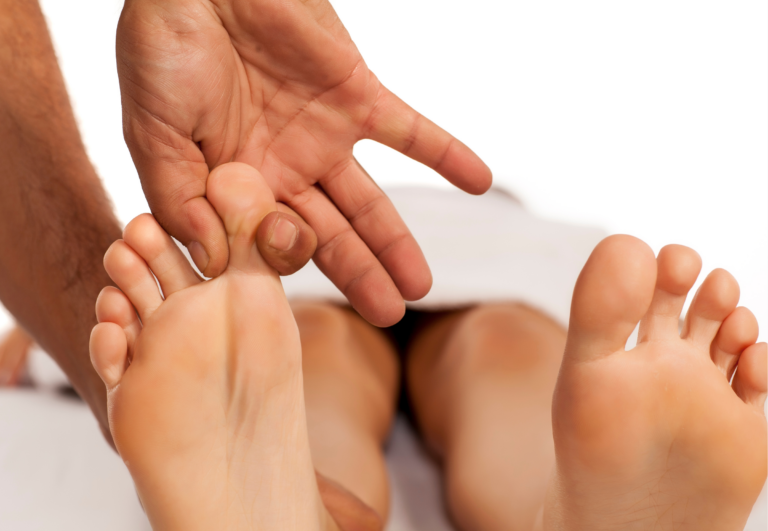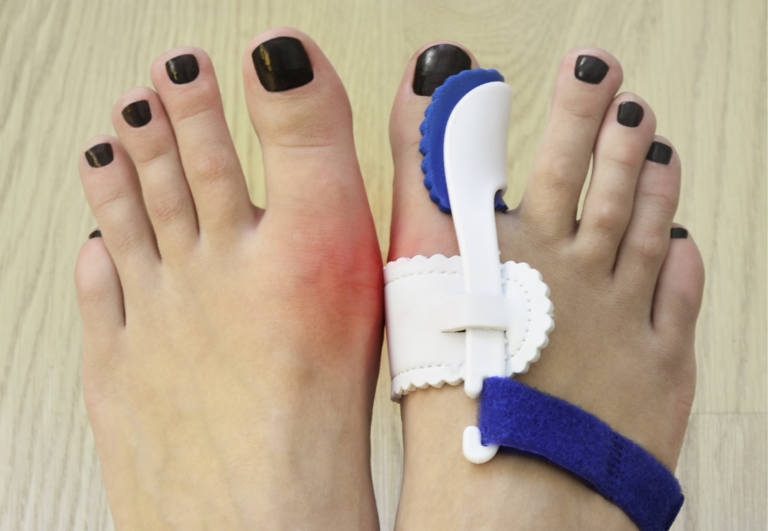Building Foot Strength with Toe Spacers: Enhancing Your Foundation
Toe spacers are simple yet effective tools I regularly use to enhance foot strength. By gently separating the toes, these spacers restore the natural alignment, which can lead to increased comfort and potentially improved balance and posture. I’ve found that incorporating toe spacers into my daily routine supports the health and structure of my feet, which is essential for anyone active or on their feet regularly.
I’ve noticed in my experience that consistent use of toe spacers can stretch and strengthen the intrinsic muscles of the feet. This not only helps in maintaining foot health but can also improve overall foot strength, which is often overlooked in conventional fitness routines. People looking to alleviate common foot issues or enhance their athletic performance might find toe spacers to be a beneficial addition to their daily practices.
Building Foot Strength with Toe Spacers
Building foot strength with toe spacers is a progressive process that can help improve overall foot health and function.
Here’s a step-by-step guide to using toe spacers for foot strengthening:
- Select the Correct Toe Spacers: Choose toe spacers that are comfortable for your foot size and shape. They should be made of a material that is both firm and flexible to allow for a comfortable stretch.
- Insert the Toe Spacers Properly: Place the toe spacers between each toe, ensuring they fit snugly but do not cause pain or excessive pressure.
- Begin with a Warm-Up: Before engaging in strengthening exercises, warm up your feet with some gentle movements, such as ankle rolls or a short walk, to increase circulation.
- Perform Toe-Gripping Exercises: With the toe spacers in place, practice gripping exercises by attempting to pick up small objects with your toes or simply scrunching a towel placed under your feet. This helps to strengthen the muscles in the arch of your foot.
- Incorporate Toe-Spreading Exercises: While wearing toe spacers, actively spread your toes apart and then relax them. Repeat this action to strengthen the muscles that promote toe abduction.
- Use Toe Spacers During Balance Exercises: Perform balance exercises such as single-leg stands or yoga poses while wearing toe spacers. This can help improve the stability and strength of the small muscles in your feet.
- Progress to Weight-Bearing Activities: Once you’re comfortable, use toe spacers during weight-bearing exercises like squats or lunges to further challenge and strengthen your feet.
- Consistent Use: Incorporate toe spacers into your regular strength training routine. Consistency is key to building strength over time.
- Gradually Increase Difficulty: As your foot strength improves, increase the difficulty of the exercises or the duration of wearing the toe spacers to continue challenging your feet.
- Listen to Your Body: Pay attention to any discomfort or pain. If you experience any adverse effects, reduce the intensity or frequency of the exercises, and consult with a healthcare professional if necessary.
- Combine with Barefoot Time: Spend time barefoot or in minimal footwear to allow your feet to move naturally and strengthen the muscles further.
Remember, building foot strength is a gradual process, and the use of toe spacers should be one component of a comprehensive foot health regimen. Always consult with a healthcare professional or a foot specialist before starting any new exercise program, especially if you have existing foot conditions or concerns.
Toe Spacers Overview

Toe spacers are designed to separate and realign toes to their natural position, providing benefits like improved balance, alignment, and foot health. Many users find them helpful in managing foot discomfort and enhancing the function of their feet.
Types of Toe Spacers
In my experience, toe spacers come in various forms to accommodate different needs:
- Interlocking Toe Spacers: Great for active use as they tend to stay in place better.
- Individual Toe Spacers: Offer customization for each toe’s specific alignment needs.
Manufacturers design these spacers to cater to a range of foot conditions, including bunions and general foot discomfort.
Materials and Safety
The materials used in toe spacers matter for both comfort and safety:
- Silicone: This is a popular choice due to its durability and flexibility.
- Gel: Often softer than silicone and provides cushioning.
- Foam: Less common, but offers a different level of comfort or support.
Quality toe spacers often use medical-grade gel or silicone, assuring safety and hypoallergenic properties. It’s essential to choose spacers that are non-toxic and free from harmful chemicals.
Benefits for Foot Health
Toe spacers provide several benefits to foot health:
- Pain Relief: By allowing the foot to position naturally, they can reduce discomfort from crowded toes.
- Alignment Correction: Regular use can assist in realigning toes, which is beneficial for overall foot structure.
- Bunion Management: They can also help in managing conditions like bunions by providing space between the toes.
As someone who has personally used toe spacers, I can attest that the right pair can significantly contribute to maintaining and improving foot health. Always remember that while toe spacers can be beneficial, they are not a cure-all and should be part of a broader approach to foot care.
Correcting Common Foot Issues
Toe spacers can be vital in correcting and mitigating common foot issues by promoting proper toe alignment. My experience has shown they’re especially helpful for issues like bunions, hammertoes, and plantar fasciitis, which cause both discomfort and foot pain.
Addressing Bunions and Hammertoes
Bunions, known medically as hallux valgus, are bony protrusions that form at the joint at the base of the big toe. Hammertoes are deformities of the second, third, or fourth toes, causing them to bend at the middle joint. In my use, toe spacers work to realign the toes and reduce pressure on the joints. By maintaining proper toe separation, spacers actively prevent the worsening of these conditions and can alleviate associated pain.
- Steps for Using Toe Spacers for Bunions and Hammertoes:
- Insert toe spacers between each toe.
- Wear them for short periods daily, gradually increasing as comfortable.
Preventing and Relieving Plantar Fasciitis
Plantar fasciitis is characterized by acute pain in the thick band of tissue known as the plantar fascia, which spans from the heel to the toes. Utilizing toe spacers helps to distribute foot pressure more evenly during movement, which can alleviate strain on the plantar fascia. Continuous use aids in maintaining natural toe splay, which can prevent plantar fasciitis from occurring or reduce existing foot pain from the condition.
- Key Benefits of Toe Spacers for Plantar Fasciitis:
- Encourage even weight distribution
- Support natural foot alignment
- Can reduce inflammation-related pain
Managing Diabetes-Related Foot Concerns
Diabetes can lead to significant foot issues, often due to poor circulation and nerve damage that results in a lack of sensation. While not a replacement for medical treatment, toe spacers are tools I find beneficial in caring for diabetic feet by helping to maintain proper alignment and prevent the toes from rubbing together, which reduces the risk of blisters and sores. It’s crucial for individuals with diabetes to consult with a healthcare professional before using toe spacers as part of their foot care routine.
- Usage Tips for Toe Spacers in Diabetic Foot Care:
- Regularly check feet for any signs of irritation.
- Start with limited time increments and monitor the foot’s reaction.
Improving Athletic Performance
As an expert in toe spacers, I’ve seen the impact these small tools can have on athletic performance. They offer a simple, yet effective way to support foot strength and enhance an athlete’s capabilities, particularly when incorporated into their training regime.
Enhancing Balance and Stability
Toe spacers can play a critical role in an athlete’s balance and stability. For example:
- Barefoot shoes/Minimalist footwear: Athletes wearing minimalist footwear can benefit from toe spacers as they encourage a more natural foot position enhancing proprioception and balance.
- Exercises: Integrating toe spacers in workouts that focus on the lower extremities can lead to improved balance, simulating the natural spread of toes during dynamic movements.
Strength Training and Mobility for Athletes
Strength and mobility are key components of athletic performance. Here’s how toe spacers contribute:
- Strength: Regular use of toe spacers strengthens foot muscles, facilitating better support for the entire body during athletic activities.
- Mobility: Increased mobility from spaced toes allows for a fuller range of motion, crucial for high-performance athletes in sports that require meticulous footwork.
By incorporating toe spacers into their routine, athletes can improve the fundamental aspects of their performance, such as balance and foot strength, which are vital for both training and competition.
Daily Practices for Optimal Foot Strength
To build foot strength effectively, it’s essential to integrate toe spacers into daily routines, perform targeted exercises, and make informed footwear choices.
Incorporating Toe Spacers into Routine
I find that using toe spacers is a straightforward way to improve alignment and mobility. By wearing toe spacers for 1-2 hours a day at home, you can gradually increase the time as your feet adjust. They’re particularly useful if you’re spending the evening unwinding or during gentle activities like reading where you can be seated comfortably.
Recommended Exercises and Stretching
When it comes to exercises, I recommend a series of movements to enhance foot strength and stability:
- Toe Raises: Lift your toes while keeping the ball of your foot on the floor. This helps to strengthen the muscles on the top of your feet.
- Toe Points: Point your toes downward, then curl them inward to strengthen the foot’s underside.
- Toe Curls: Using a towel on the floor, grip and release it with your toes. This exercise is great for improving circulation and grip strength.
It’s best to do these exercises both with and without toe spacers to train your feet for better balance and stability.
Footwear Choices and Alternatives
Make wise choices regarding footwear to enhance the benefits of toe spacers and exercises:
- Running shoes: Opt for shoes with wider toe boxes to facilitate better circulation and alignment.
- Barefoot shoes: These mimic the natural shape of your foot, promoting proper form.
- Alternative to high heels: High heels often come with narrow toe boxes so aim to wear them sparingly.
- Conventional Footwear: Regularly wearing shoes with narrow toe boxes can lead to alignment issues, so choose alternatives with a more natural fit when possible.
I avoid shoes that cramp my toes and disrupt the natural form of my feet. Instead, embracing footwear that complements the natural mobility and fluidity my feet need to remain strong and pain-free.
Selecting the Right Toe Spacer
Choosing the right toe spacer is essential for those looking to improve foot strength and alignment. My experience has taught me that factors such as material, size, and brand can significantly affect comfort and results.
Factors to Consider When Buying
When you’re looking to buy toe spacers, key factors to consider are material and fit. The most common materials are silicone, gel, and foam. Silicone tends to provide a firm grip and is easy to wash, making it a hygienic choice. Gel toe separators offer cushioning that molds to your toes, while foam spacers can be softer and more comfortable, but may not last as long. Ensure that the toe spacers you choose provide safe, comfortable separation without causing any discomfort or pain.
| Material Type | Features | Pros | Cons |
|---|---|---|---|
| Silicone | Firm, washable | Durable, hygienic, good grip | Less cushioning |
| Gel | Cushioning, molding | Comfort, adapts to toe shape | May wear out quicker |
| Foam | Soft, comfortable | Gentle, great for sensitive skin | Not as durable, less washable |
Comparison of Top Brands and Products
While assessing toe spacers, it’s wise to compare top brands and their offerings. Correct Toes is known for their anatomically friendly design and various size options to fit different feet. They are made from silicone, which balances cushioning with a secure fit.
Look for brands that offer different sizes and a focus on design that encourages natural toe alignment. Grip, comfort, and whether the product can be used during daily activities are also important to consider.
| Brand/Product | Material | Notable Features |
|---|---|---|
| Correct Toes | Silicone | Anatomical fit, size variety, activity-friendly |
| Generic Gel Spacers | Gel | Budget-friendly, adaptive cushioning |
| Specialized Foam | Foam | Extremely soft, best for light use and sensitive skin |
In my personal use, I’ve found that proper sizing is as crucial as material. A properly sized toe spacer should fit snugly but not tightly, allowing for comfortable wear over extended periods.





